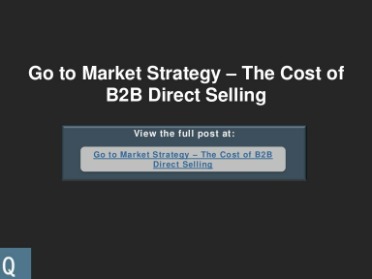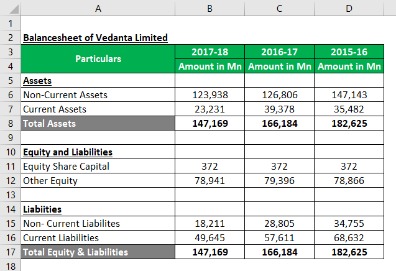
Smaller tangible assets may be an easier target for theft as well. The theft of digital assets may require technical knowledge, and your actions may still be traceable back to your personal accounts. Therefore, it may cost more to protect, store, and oversee tangible assets. Be mindful that very similar products may have different characteristics.
Tangible assets are physical and measurable assets that are used in a company’s operations. Assets such as property, plant, and equipment are tangible assets. Tangible assets form the backbone of a company’s business by providing the means by which companies produce their goods and services. As earlier pointed out, tangible assets are the easiest to value because they typically have a finite life span and value.
Types of Tangible Assets
Help her sort through the
list below and note the assets that are tangible long-term assets
and those that are intangible long-term assets. One of the tangible assets’ features is that it can turn into cash due to its readily available market value. The liquidation method sets the value of a tangible asset through a liquidation — the remainder value of the asset after the asset’s sale and the repayment to all creditors.
When looking at tangible assets it’s important to understand the two types of asset. When we expect these assets to have a lifespan of more than 12 months, we apply depreciation to them. We use a depreciation process rather than allocating the whole expense to one year. Consider the example of a car manufacturer preparing the assembly and distribution of a vehicle. The raw materials acquire are tangible assets, and the warehouse in which the raw materials are stored is also a tangible asset. The manufacturing building and equipment are tangible assets, and the finished vehicle to be sold is tangible inventory.
Examples include inventory, cash and cash equivalents, accounts receivable, and other liquid assets. Several industries have companies with a high proportion of intangible assets. When a company is sold, though, real assets are often considered part of the selling price. A lumber company with new machines and a sizable stack of lumber is going to fetch a higher price than a simple warehouse with outdated machines and no inventory. It’s comparable to selling your house, car and boat at the same time, instead of selling one these assets individually. An asset is tangible when it takes a physical form, that is, it can be seen, touched, and felt.
Replacement Cost Method
You can find net working capital by subtracting your business’s current liabilities from its current assets. For example, an inventory is a tangible asset that when used, is then included in the cost of goods sold for a company. Cost of goods sold area representation of the costs directly involved in the production of goods.
What Are Assets, Liabilities and Equity? – Bankrate.com
What Are Assets, Liabilities and Equity?.
Posted: Fri, 02 Jun 2023 07:00:00 GMT [source]
For example, your home is form of tangible current assets because it has value and you can touch it and see it. In businesses, physical and real assets may be weighed when a business seeks a loan. Possessions included in the list of tangible assets for business include business inventory, property the business holds, and equipment owned by the business. A lumber company’s real assets might include its current stock of lumber, any machines used to make lumber, the plant where the company operates, and any cash the company currently holds. On the other hand, most tangible assets can be readily converted to cash, or are already cash.
What is a tangible asset?
Initially, they are recorded in the balance sheet but as they get used up, they are carried over to the income statement. Fixed assets are those assets that possess essential value for the business in the long run and are not readily convertible to cash at the end of an accounting period. As they cannot be converted to cash, they must be accounted for in the current accounting period and this is achievable by the means of depreciation.
All current assets (aka liquid assets) are tangible assets because they have finite and established value and useful life. In a company’s balance sheet, we usually list tangible assets under PP&E. Tangible assets include both fixed assets such as land, machinery, equipment, vehicles, buildings, and current assets.
Categorizing Intangible Assets
Tangible assets are essential for the maintenance of day-to-day business operations. Every company needs assets for its business to continue operating. This means that without assets, the continuity of the business is not guaranteed. A company can use its physical assets as collateral for obtaining loans for the expansion of its business. In other words, the lender can seize these assets if the company defaults on its loan payment because they possess definite transactional value.

Fair value is the price that would be received to sell an asset in an orderly transaction between market participants at the measurement date. Thus, it is important to keep in mind that the fair value of an operating asset can fluctuate over time based on market conditions. Understanding the very essence of multiple kinds of assets can be a bit confusing, so here we are — ready to help you out.
The record company that owns the copyright would get paid a royalty each time the song is played. A company can calculate its tangible assets by examining its balance abel and carr formed a partnership and agreed to divide sheet. The first step in doing this is to assess the worth of the assets, starting with the one that is the most liquid including cash and cash equivalent.
- Identifiable intangible assets are often indefinite, meaning they stay with a company for as long as it exists.
- However, they cannot be converted to cash readily towards the end of an accounting period.
- Singers, actors and lyricists have a brand value that determines their worth.
- One could argue that the value of a tangible is the money it is able to fetch for it in the open market.
Unidentifiable intangible assets are often definite intangible assets, meaning they have a limited lifespan. A client relationship, for example, is only an asset for as long as it’s maintained. One can also classify assets on the basis of their physical existence.
There are three main methods to determining the value of a tangible asset. “Tangible assets” is not a category reported on financial statements. Instead, these assets are spread across current and long-term assets. Let’s say you have a net income of $50,000, fixed assets worth $85,000, and net working capital of $40,000.
In the course of selling the business, identifying assets and valuing them correctly is vital in determining the business’s net worth whether for the purpose of sale or bankruptcy. First, when purchasing or selling an asset, valuing it will help you know the correct price. Further, during a merger, asset valuation helps in determining the value of the business. Moreover, when you apply for a loan, the bank might ask you for collateral.
